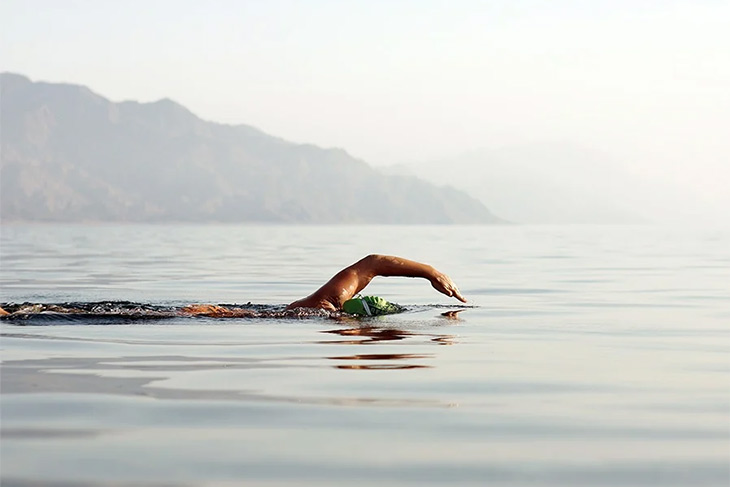How to swim yourself to fitness

Swimming is the unifying Aussie activity — a sport practised by men and women of all ages all over the country. But how does swimming rank as a form of physical activity? And is it a good exercise for building muscle?
A typical swimmer expends about 4 times as much energy as a typical runner on the same distance. But while running 4km is something many regular exercisers can manage, swimming 1km is nowhere near as easy.
Muscle versus technique
While professional swimmers have the bodies of Roman gods, it isn’t primarily their muscles that make them champions. That is why swimming is such a great sport for us lesser mortals too - it’s almost all down to technique.
"I often find that people who are very fit and strong, like bodybuilders, they jump in the pool and can’t do more than a lap because they’re trying to power through the water with their arms and legs. The more power you put out, the more resistance you create," says Hamid Mobarrez, head swim coach for YMCA Sydney at the Ian Thorpe Aquatic Centre.
Hamid has been a professional swimmer for many years, competing at the 2000 Sydney Olympics and several world championships. He believes swimming is 80% technique and 20% muscle. And he thinks anyone can learn to swim properly.
According to Hamid, most people can swim. The problem is that not everyone can swim well enough to make it efficient exercise. If your technique is so poor that you need a break after each length in the pool, you’ll never work your body hard enough to bring about physical adaptations.
Stroke correction
So, to get the most from a session in the pool, it's all about improving and building confidence in your technique. That’s where stroke correction comes in.
Stroke correction classes basically teach you better swimming technique — how to move your arms and legs, and how to decrease your resistance in the water.
"We have people who just started our stroke correction program last year soon moved across to the squad training and by the end of the year they did the Coogee to Wedding Cake Island Challenge," Hamid says.
That is a 2.4km ocean race, by the way. Inexperienced swimmers, Hamid reckons, can increase their efficiency by 50% in only 12 weeks.
"You only need enough power to move your body forwards in the water, and I believe 99% of people have that strength,” Hamid says.
Classes are available at many swimming clubs. Check Swimming Australia’s listing to find a club near you. And it’s not just for the young ‘uns. Hamid says his most consistent swimmer is a 78 year old man.
3 tips to improve your technique
- Head down. Focus your head right down into the pool, with your eyes looking about 2m ahead.
- Keep breathing. Holding your breath makes you tense up. Breathe as rhythmically as you can.
- Arms stretched. The further you extend your arm, the longer distance you pull in each stroke.
Putting on muscle
Swimming predominantly builds the upper body. The typical professional swimmer’s body has a Y-shape: narrow hips and broad shoulders.
"The lat muscles on the side of your back get really strong. Often you see swimmers who have big shoulders, and that’s just a progression from building those lat muscles into big, giant shoulders that almost are pushed up from the back," says Hamid.
You build strong arms by using the triceps as you push the water behind you and the biceps and interior deltoids as you bring your arms forward.
Does swimming make you hungry?
One common complaint is that swimming makes you hungry, so you end up ruining your exercise session by overeating afterwards.
If you tend to feel hungry after a swim session, make sure you have a snack 30-60 minutes before your session to keep your energy levels up. Afterwards, aim for a high protein, low GI snack.
Also, remember to stay hydrated during the session. Your thirst mechanism often lags behind your body’s need for hydration, so don’t wait to feel thirsty before replenishing lost fluids. Furthermore, thirst can be confused for hunger, which is another reason to keep drinking.
Quick facts about swimming
- Women expend up to 30% less energy than men because of their higher body fat.
- Much in the same way as yoga, the stretching and the rhythmic breathing in swimming releases endorphins which make you feel happy.
- No other activity can work your cardiovascular system as hard as swimming without stressing your skeletal system. It’s the ideal sport if you have stiff joints or painful knees.
- Swimming is a cross-training sport that balances both sides of your body, training whole groups of muscles at the same time.
